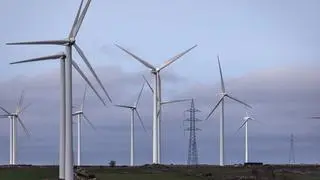Bajaj Auto has proposed to invest more than ₹1,000 crore, which will include investments in a new unit for electric vehicles, under the production linked incentive (PLI) scheme as the leading two and three-wheeler player accelerates plans to widen its electric vehicle (EV) portfolio.
The company has applied for the PLI scheme under which ₹1,000 crore of investment will be done over the next five years. The proposed investment outlay will include ₹300 crore of investment in a new unit at the Pune factory complex, which will have half a million production capacity per annum for electric two-wheelers and the first vehicle is expected to be rolled out by June, Rakesh Sharma, Executive Director of Bajaj Auto, said during the company’s Q3 earnings call.
The company sold about 2,000 units of its electric two-wheeler Chetak during the December 2021 quarter, while the order book for Chetak stands at about 10,000 units. Currently, Chetak is sold in eight cities and it is eying for pan-India penetration in 9-12 months.
The company is working on expanding its EV portfolio in order to improve the penetration of EVs as the demand for EVs was coming from all sides.
Sharma said the traditional way of segmentation (like commuter, mid range or sporty) would not be relevant in electric 2W space.
New ways of segmentation are needed based on usage, speed (like low and high) and charging. Bajaj Auto has taken up a platform approach to address the demand across different segments as and when requirements arise.
“There are 3 platforms in our R&D which are being conjured up and we expect to cover most of the usage cases with these. We are looking at not just motorcycles, but scooters and other different forms. KTM and Bajaj are jointly evaluating different forms of EVs,” he added.
He said supply chain issues (primarily on the battery side) started in Q1 FY20. Arrangements between the company vendor and its suppliers collapsed and as a result, Bajaj Auto was impacted. Subsequently, the chip shortage issue emerged and aggravated the problems.
“In the last 6-9 months, we have indigenised a lot of these components and we have also put in new supply chain arrangements now. We see better visibility now though some uncertainties remain on the chip side for all companies,” he added.
In the three-wheelers space, although the company is developing an electric three-wheeler (which will come in both cargo and passenger options), it sees bright scope for CNG-powered three-wheelers.
“CNG is a very, very good option when it comes to the environment and operating cost. Also, the government has been aggressively rolling out CNG outlets and I would say it is one of those infrastructure projects which the government has successfully implemented in the last few years,” he said.
Sharma is of the view that transition to electric in three-wheeler space will happen gradually as there are some concerns over charging time taken by electric three-wheelers and uncertainty over the resale value of electric 3Ws after 3-5 years (as compared to CNG variants) in the individual user segment.







Comments
Comments have to be in English, and in full sentences. They cannot be abusive or personal. Please abide by our community guidelines for posting your comments.
We have migrated to a new commenting platform. If you are already a registered user of TheHindu Businessline and logged in, you may continue to engage with our articles. If you do not have an account please register and login to post comments. Users can access their older comments by logging into their accounts on Vuukle.